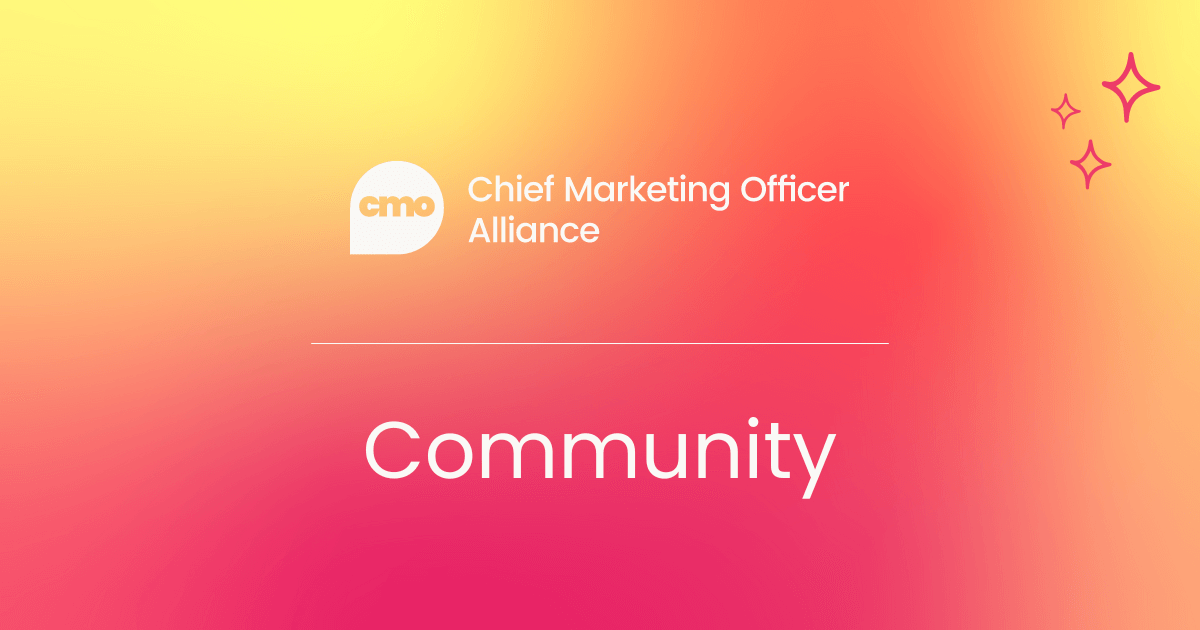“Thought leadership delivers an ROI of 156%, which is 16 times more effective than typical marketing approaches.” – The ROI of Thought Leadership, by Cindy Anderson and Anthony Marshall
1. Start with your ‘why’
Thought leadership only works when it’s intentional, meaning you need to know exactly why you're doing it.
Maybe you want to elevate your personal brand so your voice carries beyond the boardroom, or perhaps you’d like to put your company on the map in a crowded market. Or maybe you’ve been operating behind the scenes for too long, and now it’s time to share what you’ve learned.
Whatever your reason, be honest about it. When your strategy has a purpose, your content is more focused, and your audience can feel the intention behind it.
A quick way to test this is to try writing a one-liner that sums up what you want to be known for. If it’s vague or sounds like corporate filler, dig deeper.
2. Know what you want to be known for
Being a thought leader isn’t about having opinions on everything, but owning a specific POV on a few relevant topics – ideally, the topics you know better than most people.
So, what do you know best? Maybe you’ve scaled three SaaS teams and have strong views on org design, or perhaps you’re navigating the shift from brand-led to product-led growth marketing and have lessons to share. Or maybe you’re investing in AI and have something to say about ethics – or even practical use cases.
Also, being “the CMO who talks about go-to-market failures” will land more powerfully than being “the CMO who talks about marketing in general”.
And you don’t have to stick to just one thing. Two or three core themes are enough to build consistency without boxing yourself in.
Scaling thought leadership: Building a corporate program
Once you've defined what you want to be known for, it's time to think bigger – how do you scale thought leadership from an individual pursuit to a company-wide initiative?
The leap from personal to corporate thought leadership isn't just about more voices; it's about orchestrating a unified, credible presence that reflects your organization's expertise and values.
Start by identifying your internal experts. Who in your organization has unique insights, deep experience, or a compelling story to tell? These aren't always your senior execs – sometimes your most authentic voices come from unexpected places. Bring these people together and align them around shared messaging pillars.
This is where executive buy-in is absolutely critical.
As Shuchi Sarkar, CMO, LTIMindtree, puts it: "Establish your culture with your leadership team. Make sure that key reports in your team are one with you in terms of what you're driving as a culture."
When your leadership is invested, it sets the tone for the entire organization.
Next, create a content system that supports consistency and collaboration. Think editorial calendars, shared content repositories, and regular brainstorming sessions.
Make it easy for your experts to contribute – whether that's ghostwriting, video interviews, or roundtable discussions. And don't forget to celebrate and recognize contributors.
As Shuchi Sarkar also emphasizes, "Credit everybody, really reward the team, appreciate them, share the credit, make sure that everybody feels that they are...the people getting the credit."
Finally, foster cross-functional collaboration. Thought leadership isn't just a marketing play – bring in product, sales, and even customer success to ensure your program reflects the full spectrum of your company's expertise.
When everyone sees themselves in the story, your thought leadership becomes truly scalable and sustainable.

3. Take stock of where you are
Before diving in, do a quick self-audit. What kind of visibility do you already have? Are you posting regularly on LinkedIn, or has it been months? Have you spoken at events, been a guest on podcasts, published blogs, or contributed to reports?
Chances are, you’re not starting from zero. So, find out where you’ve already made an impact and where the gaps are.
Sometimes, the first win is just doubling down on something you’re already doing, but doing it with more consistency and purpose.
4. Find your voice
One of the biggest mistakes CMOs make is sounding like everyone else. It’s easy to play it safe, to use the same phrases, reference the same trends, and hedge every opinion with “it depends.” But that’s not leadership.
If you really want to stand out, you need to have a point of view. Something real. Something that might make a few people raise their eyebrows or hit “share.”
Think about the things you say behind closed doors, or that you wish someone would say publicly. That’s usually where your best material lives.
Don’t be controversial just for the sake of it. But don’t be afraid to challenge conventional thinking, either. People remember the voices that make them stop scrolling.
5. Create a system, not a to-do list
You don’t need to publish every day to be a thought leader. But you do need to show up regularly. The easiest way to do that is by creating a system that works with your schedule, not against it.
Think about formats you enjoy. If you like writing, stick with articles or blogs, but if you’re more comfortable speaking, look at panels, webinars, or interviews.
Some of the best thought leaders in the game are only active once or twice a month – but when they show up, they say something that matters.
Once you find your rhythm, you can build a light content calendar around it. Maybe you write one long-form post a month, share two shorter ones on LinkedIn, and aim for one speaking opportunity per quarter.
And if you’ve got a team or freelancer support, use it. Your voice should be front and center, but you don’t need to do all the legwork yourself.
6. Repurpose everything
Here’s the good news: you don’t need to come up with new ideas every week. In fact, most strong personal brands are built on just a few ideas said over and over in different ways.
If you write a strong blog post, turn it into a LinkedIn carousel or video. If you give a great presentation, record a short video summary and share the slides. If you get interviewed on a podcast, pull out a few quotes and turn them into visuals.
There are many different things you can do to make the most of your content.

7. Get smarter about distribution
Creating great content is only half the battle. If no one sees it, it doesn’t matter.
That’s why you need a distribution plan. Share content natively on LinkedIn, mention people, join relevant comment threads, share your thoughts in Slack groups, private communities, or newsletters where your peers are paying attention.
Also, look for ways to borrow existing audiences. That could mean guesting on someone else’s podcast, co-writing a piece with another exec, or speaking at niche events where your target audience hangs out.
The idea isn’t to go viral, but to consistently show up in places where your voice can have an impact.
Crafting a modern thought leadership distribution strategy
Creating standout thought leadership content is only half the equation – the other half is getting it in front of the right people, consistently.
So, what does a smart distribution strategy look like today? It’s about meeting your audience where they already are and leveraging every layer of your organization to amplify your message.
Start with social media, but don’t stop there.
As Nicholas Spiro, Chief Commercial Officer at Viral Nation, explains: "Social being the first thing you think about operationalizing, when you launch a new product, when you have a new moment."
LinkedIn remains the go-to for B2B, but don’t overlook podcasts, newsletters, industry Slack groups, and niche communities. Each channel has its own rhythm and etiquette – tailor your message accordingly.
Now, here’s where it gets interesting: employee advocacy.
According to a recent session on video marketing trends, "posts that are shared by employees of a brand get eight times more engagement on average than posts that are shared by the brand itself."
That’s not just a nice-to-have – that’s a multiplier effect. Encourage leaders, subject matter experts, and frontline employees to share and comment on your content. Equip them with ready-to-use snippets, visuals, or talking points to make it easy.
Want a real-world example? One SaaS company rolled out a three-tier advocacy approach: leadership published original insights, experts hosted webinars and Q&As, and employees shared personal takes on company themes.
The result? Their reach and engagement doubled within a quarter, and they started seeing their ideas referenced in industry conversations they weren’t even part of.
The bottom line: distribution isn’t about going viral – it’s about showing up, everywhere your audience pays attention, again and again.
8. Look beyond “likes”
It's tempting to focus on surface metrics such as likes, comments, and impressions, but what really matters is influence.
Are people referencing your ideas in meetings or on calls? Are you getting invited to speak or contribute to strategic conversations? Are candidates, partners, or press reaching out because they saw something you posted?
These are the signals that tell you your thought leadership is working. So, keep an eye on them and use that feedback to double down on what’s resonating.
How to measure the ROI of thought leadership
Let’s be honest: proving the ROI of thought leadership can feel like chasing shadows. You know it’s working when the right doors open, but how do you show that on a dashboard?
The answer: blend qualitative signals with hard metrics, and, crucially, align on what matters with your executive team from the start.
According to Guy Yalif, Chief Evangelist at Webflow, "So this alignment on metrics, I think it's key to getting the CEO, CFO and board on board."
Start by defining what success looks like for your business. Is it brand lift? Pipeline acceleration? Executive visibility? Pick a handful of metrics everyone agrees will signal progress.
Here are some practical ways to track impact:
• Brand lift: Use surveys or third-party brand studies to measure changes in awareness, perception, or share of voice before and after campaigns.
• Lead generation: Track inbound leads, demo requests, or downloads directly attributed to thought leadership content (UTM links help here).
• Sales influence: Monitor whether your content is referenced in sales conversations or cited by prospects during the buying process.
• Executive invitations: Count speaking requests, media interviews, or partnership opportunities that arise from your thought leadership.
• Talent attraction: Note increases in high-quality job applicants referencing your content or brand reputation.
Attribution isn’t always straightforward.mSometimes, it’s about connecting the dots between content, conversations, and outcomes.
As Guy Yalif also advises, "Pick some metrics that you can align on and say, hey, if we do that, this was a good investment."
Don’t be afraid to supplement numbers with qualitative feedback: screenshots of influential mentions, testimonials from partners, or stories of unexpected opportunities.
The best ROI stories combine data and narrative because, in the end, influence is as much about resonance as reach.
9. Don’t ghost your audience
This is the part where most people give up. They post a few times, don’t get much engagement, and disappear. But thought leadership isn’t built in bursts. It’s built through consistency.
The people who eventually break through are the ones who kept showing up, even when it felt like no one was listening.
Treat it like a campaign:
- Set goals,
- Schedule time for it,
- And keep your momentum up, even if the first few months feel slow.
If it helps, think of your content like building a reputation.

10. Stay curious
Finally, the best thought leaders aren’t just smart, they’re also curious. You must be aware of your industry, read, listen, and ask good questions. Don’t be afraid to update your opinions and thoughts when the world changes.
In addition, make sure to listen to the rising voices in your space and follow people outside your immediate circle. You’ll want to explore what's happening in product, engineering, design, and operations, too.
This is because staying curious keeps your ideas fresh and your perspective grounded in reality.
In short
You don’t need to be famous, loud, or constantly posting to become a thought leader. You just need to show up with purpose, have something real to say, and commit to saying it consistently.
Do that and, over time, your voice will shape marketing (and the CMO role).
Join our Slack community to get access to top CMOs all over the world, ask your most pressing questions, get inspired by success stories, and so much more.







.png)









 Follow us on LinkedIn
Follow us on LinkedIn








